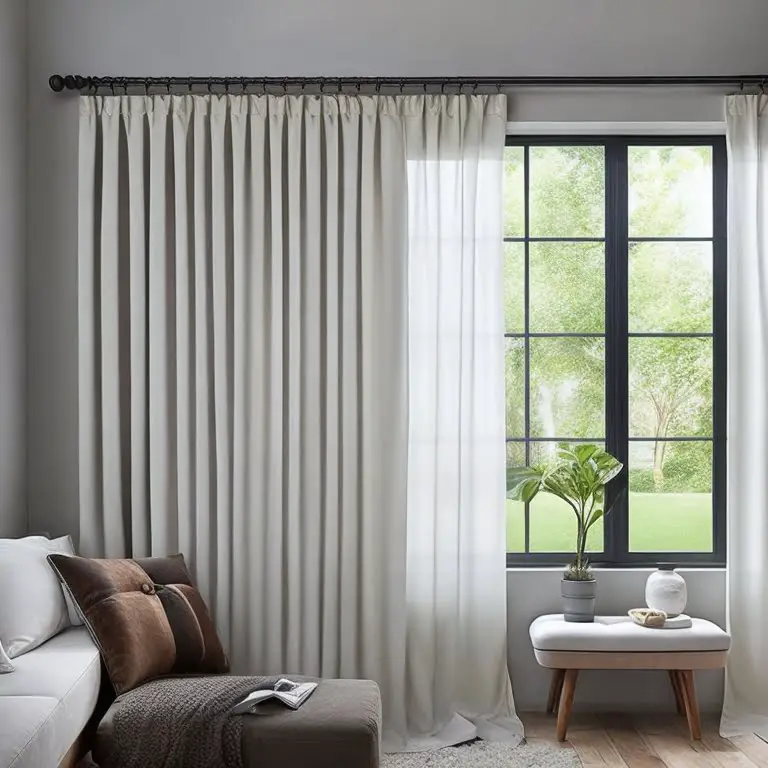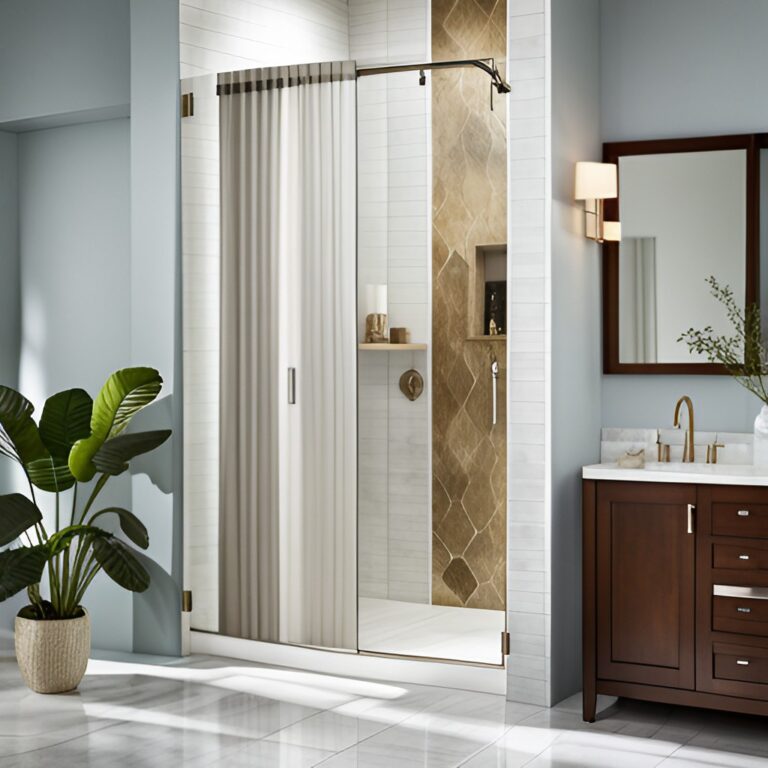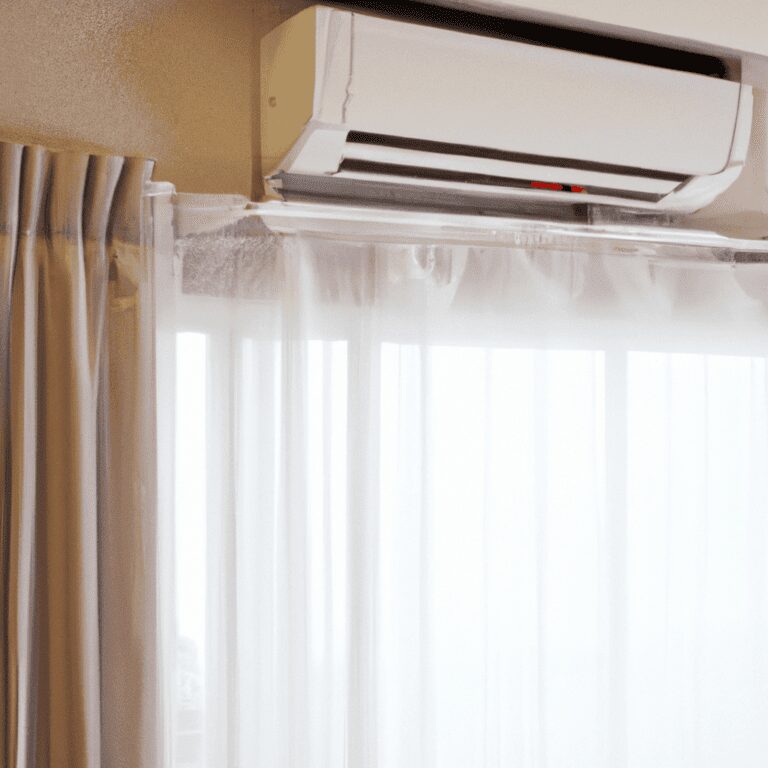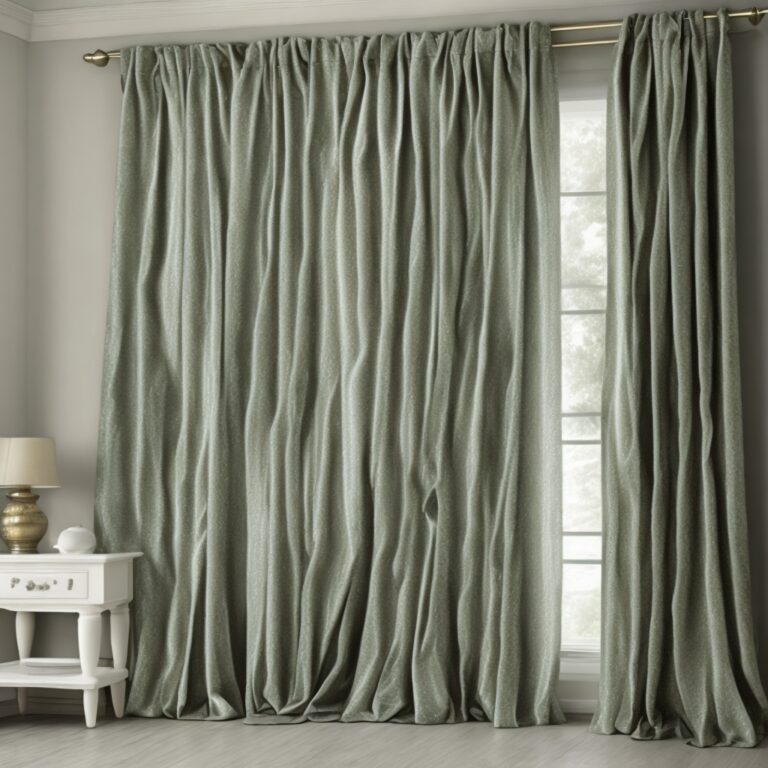How to hang curtains without drilling (7 easy methods)
Curtains are an essential part of home decor, providing a warm and inviting atmosphere while also giving privacy. But when it comes to hanging curtains, the task can be intimidating–especially if you don’t want to make holes in your walls by drilling. Fortunately, there are several ways to hang curtains without drilling that will give you the look and feel you desire without damaging your walls. In this post, we’ll cover how to hang curtains without drilling as well as some of its advantages. So let’s get started!
How to hang curtains without drilling

When it comes to hanging curtains without drilling, the first step is to consider what type of window you have and what material your curtains are made from. Depending on the style of window and fabric used, there are a variety of options available for mounting your curtain rods or panels.
For example, if you have an arch-shaped window with lightweight curtains, tension rod brackets may be a good choice as they can easily slip into place without any tools or damage. On the other hand, heavier fabrics such as velvet may require more permanent solutions like wall hooks or adhesive strips that will securely hold up even thick materials.
Additionally, some windows may require specialty hardware such as clips for bay windows or corner connectors for doors and windows in tight spaces. By taking these factors into account when choosing how to hang your curtains without drilling, you’ll be able to create a beautiful look that fits perfectly with your home decor and Window Treatment!
Evaluation of available options:
- Tension rods
- Magnetic curtain rods
- Adhesive hooks
- Command hooks
- Kwik-Hang curtain rod brackets
- Ceiling-mounted curtain track
- Suction cup curtain rods
Preparing the Window and Curtains

Once you have chosen your preferred method for hanging curtains without drilling, it is important to properly prepare the window and curtains for installation. The first step is to measure the window dimensions, including height and width. This will help you determine how much fabric you need and how long the curtain rod should be.
Next, select appropriate curtains for the window size, paying attention to the weight of the fabric as well. Heavier fabrics may require special hardware or an extra set of real curtain rods. If you are using adhesive strips, make sure that your curtains have a rod pocket at the top so they can be easily attached to the strip. Finally, install any necessary mounting brackets or other hardware according to our instructions below.
Method 1: Hanging Curtains with Tension Rods hanging curtains without drilling
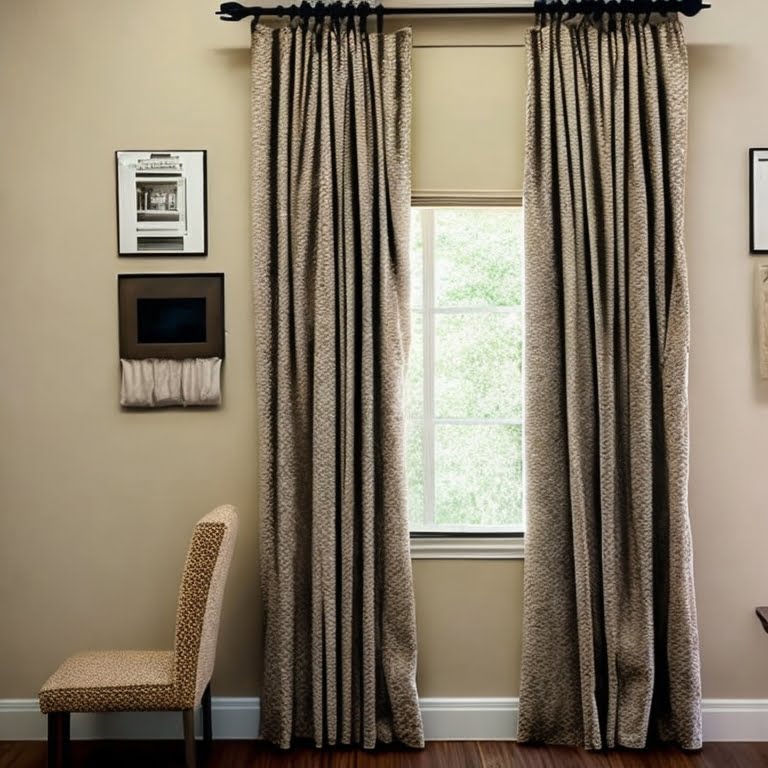
Tension Rod looks like a shower Curtain Rod, If you are looking for a way to hang curtains without drilling holes in your walls, tension rods can be the perfect solution. These adjustable rods fit snugly between window frames or other surfaces without using nails or screws. Here’s how to hang curtains with tension rods without drilling.
Step 1: Measure Your Windows
Before buying tension rods and curtains, measure the width and height of your windows. Make sure to add a few inches to the width measurement to ensure that the curtains cover the entire window frame.
Step 2: Purchase the Tension Rods
You should purchase tension rods that are slightly longer than the width of your window frame to ensure a secure fit. These rods come in various sizes and finishes, so make sure to choose ones that match your decor.
Step 3: Install the Tension Rods
To install tension rods, hold the rod at an angle and position it between the window frame or other surfaces without drilling. Gradually straighten it by adjusting the length of both sides until it fits snugly and securely. Make sure the rod is level before hanging the curtains.
Step 4: Hang the Curtains
Once you have installed the tension rods, it’s time to hang the curtains. Simply slide the curtain rings onto the rod and evenly distribute them before placing the rod between the surfaces. Adjust the curtains as needed to ensure they hang evenly.
Step 5: Finishing Touches
The final step is to add the finishing touches. Adjust the curtains to hang just above the floor for a more polished look. You can also use curtain tiebacks to hold the curtains open during the day or add a valance to cover the top of the window for a more decorative touch.
It’s essential to ensure that the tension rod is level before hanging your curtains, so use a level to check that the rod is straight. Once you’ve confirmed that the rod is level, it’s time to hang your curtains. Gently slide the rod so that it’s centered in the window frame, then attach your curtains to the rod.
Pros
- Easy installation without drilling or tools.
- Can be quickly repositioned or adjusted.
- Suitable for various window sizes and types.
- Can hold lightweight to medium-weight curtains.
- No damage to walls or surfaces.
Cons
- Limited weight capacity for heavy curtains like blackout curtains.
- May not work on windows with non-magnetic materials.
- Limited design options compared to traditional rods.
- May have visible magnetic attachments.
- Requires a metal surface for proper functioning.
Method 2: Installing Magnetic Curtain Rods for hanging curtains without drilling
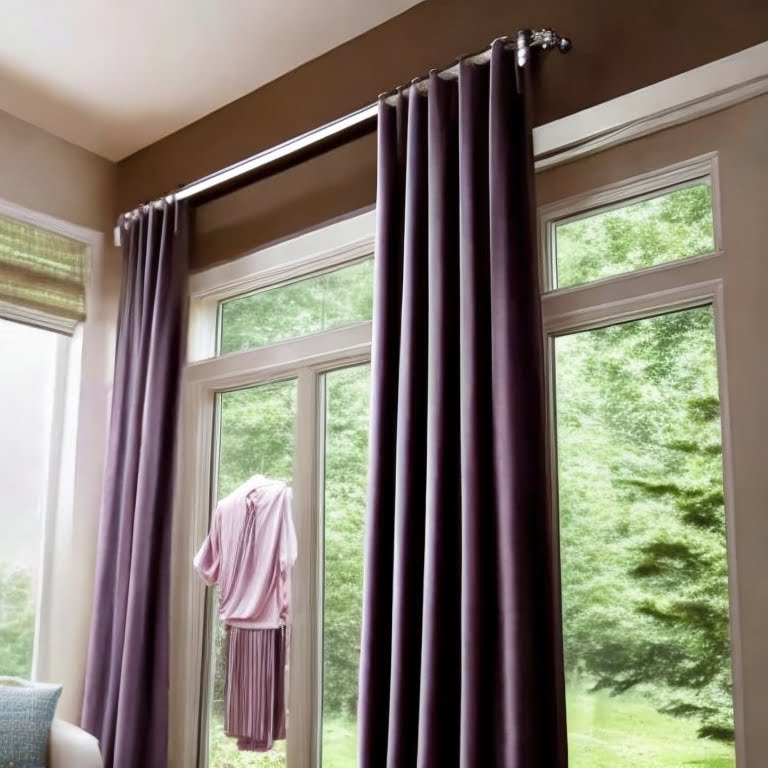
Magnetic curtain rods are also an excellent alternative to traditional curtain rods that require drilling. They work by attaching to metal surfaces in your home, such as window frames, without the need for brackets or screws.
Step 1: Measure your window
Begin by measuring the width and length of your window. This will help you determine the size of magnetic rods you need. Magnetic curtain rods come in various sizes to fit different window dimensions. Once you have determined what size you need, purchase the magnetic curtain rod kit.
Step 2: Clean the surface
Clean the surface where you plan to install your magnetic curtain rods. For instance, wipe down the metal window frame with a damp cloth to remove any dirt or dust.
Step 3: Attach the magnetic rods
Check the placement of the curtain rod before attaching it to the surface. Magnetic rods need to be installed with the right polarity. Good news is, they come with instructions and it’s a simple process. Once you have checked the polarity, attach the magnetic rods to the surface by placing them at a 45-degree angle and then slowly pushing them up into place.
Step 4: Hang the curtains

After you have securely attached the magnetic curtain rods, it’s time to hang your curtains! Gently place the curtain over the magnetic rod and adjust accordingly.
Now you can hang your curtains by sliding the curtain’s rod pocket onto the magnetic rod, and you’re all done. You’ll be amazed at how quick and easy the process is, and you don’t have to worry about damaging your walls or making any unnecessary holes.
Pros
- Easy to install
- Versatile
- Affordable
Cons
- May not be as sturdy
- May not be as aesthetically pleasing
- May not be as secure in older or drafty windows
They are also adjustable and can be quickly moved from one location to another without leaving any damage or holes. Lastly, magnetic rods are cost-effective, making them an excellent option for those on a budget.
Method 3: Utilizing Adhesive Hooks for hanging curtain without drilling
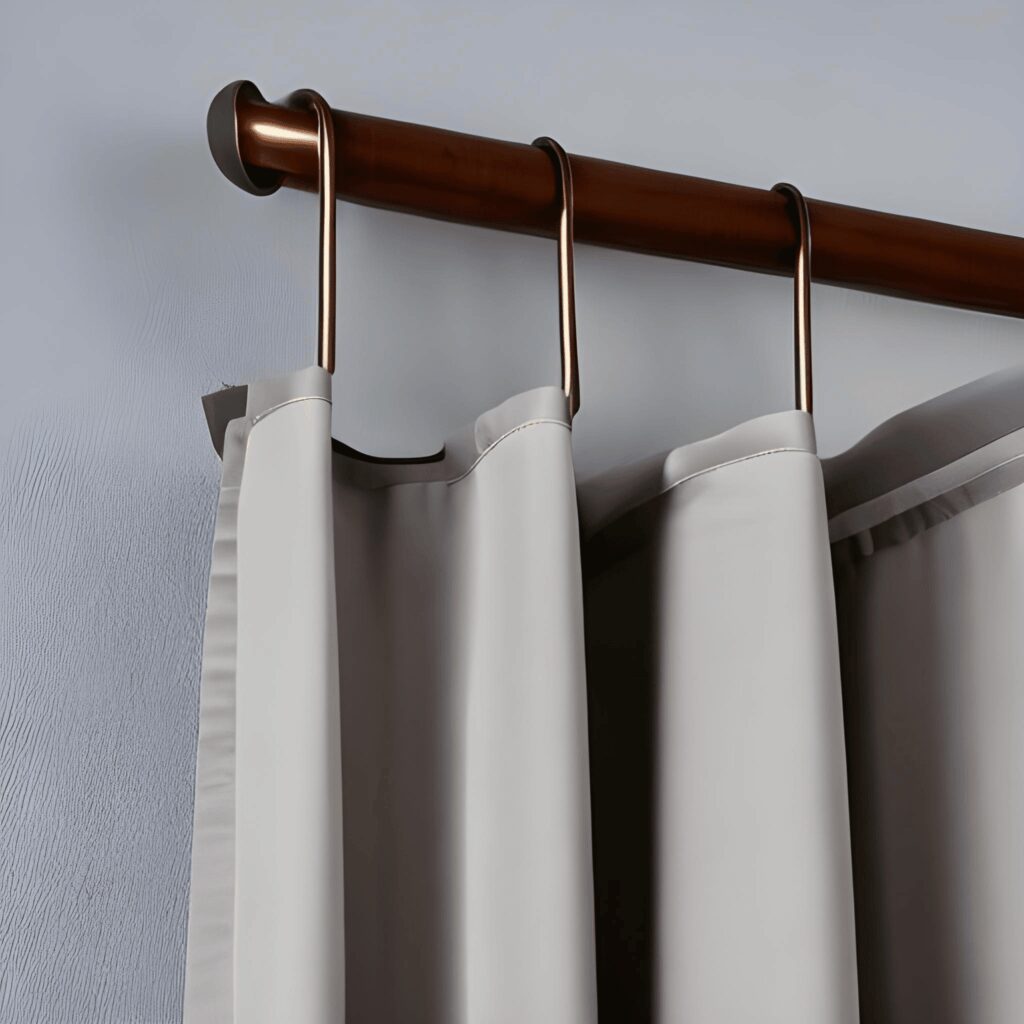
One of the most popular methods for hanging curtains without drilling is by using adhesive hooks. They are inexpensive, easy to use, and leave no trace on your walls. Here’s how you can do it:
Step 1: Choose the Right Hooks
Not all adhesive hooks are suitable for hanging curtains. You need to select hooks that can hold the weight of your curtains. Check the weight limit of the hooks before purchasing them. You can also look for hooks that are specifically designed for curtains.
Step 2: Clean the Walls
Before sticking the adhesive hooks, clean the walls first to ensure that they will adhere properly. Use a clean cloth to wipe the wall surface where you want to place the hooks. Make sure the surface is completely dry before putting the hooks on.
Step 3: Apply the Hooks
Choose the placement of the hooks, and then remove the backing from the adhesive strip. Press the hook firmly onto the wall and hold it for 30 seconds to ensure that it sticks well. Wait for at least an hour for the adhesive to fully bond to the wall before hanging your curtains.
Step 4: Hang the Curtain Rod
Once the hooks are secured, you can now hang your curtain rod. Most adhesive hooks are designed to hold the curtain rod by simply slipping it onto the hook. Make sure that the rod is positioned evenly and securely on the hooks.
Step 5: Hang Your Curtains
Finally, it’s time to hang your curtains onto the hooks. Simply slide the hooks onto the curtain rod and adjust the curtains as needed. If you find that the curtains are sliding around on the hooks, you can add a small piece of adhesive tape to the back of the curtain to help hold it in place.
Pros
- Easy and quick installation without drilling.
- No damage to walls or surfaces.
- Suitable for temporary setups or rental properties.
- Versatile and can be used for various purposes.
- Can be easily removed and repositioned.
Cons
- Limited weight capacity.
- The adhesive may not hold well on certain surfaces.
- Limited design options.
- Visible hooks may not be aesthetically pleasing.
- Requires a smooth and clean surface for optimal adhesion.
Method 4: Using Command Hooks for hanging curtain without drilling
If you want to hang curtains without drilling, using Command Hooks is one of the most popular options. Here’s a step-by-step guide on how to do it:
Step 1: Choose the Right Hooks.
Command Hooks come in different sizes and shapes, so make sure you choose the one that suits your curtains. The package will usually indicate the weight limit, so ensure the hooks can bear the weight of your curtains.
Step 2: Prepare the Surface.
To get the best results, you should ensure the surface is clean and dry before attaching the hooks. Wipe it down using a clean, dry cloth and avoid any textured surfaces.
Step 3: Attach the Hooks.
Peel off the backing paper from the adhesive strip and press the hook firmly onto the wall. Hold it for around 10 seconds to allow the hook to bond with the surface.
Step 4: Wait for the Adhesive to Dry.
The adhesive of Command Hooks needs time to set before you can hang anything on them. Wait for at least an hour before hanging the curtains.
Step 5: Hang the Curtains.
Carefully hang the curtains onto the hooks, ensuring they’re level. Command Hooks can hold curtains securely and withstand regular usage.
Pros
- No Damage to Walls
- Easy to Install
- Temporary Solution:
- Cost-Effective
Cons
- Weight Limitations
- Not as Sturdy
- Limited Styles
- Possibility of Failure
- Dependent on Wall Surface:
Method 5: Hanging Kwik-Hang curtain rod brackets for hanging curtains without drilling
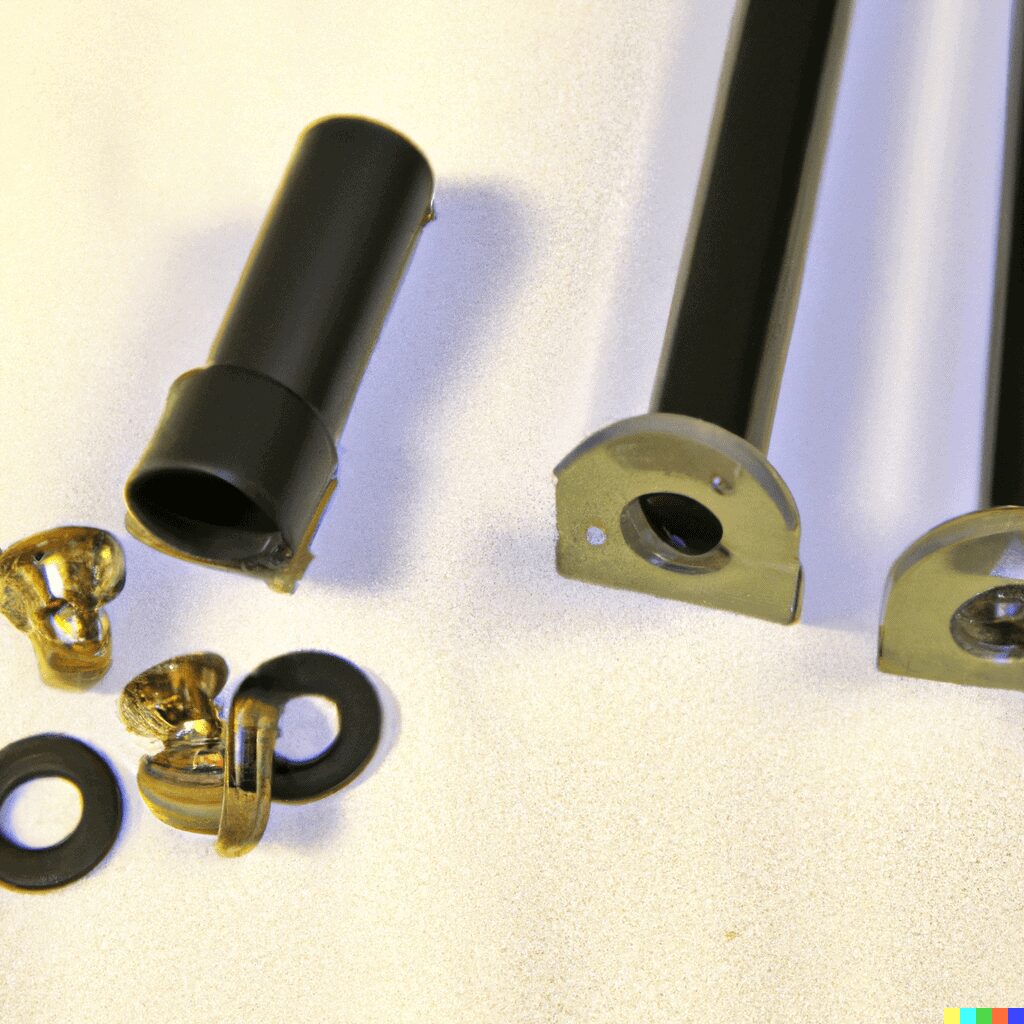
Kwik-Hang curtain rod brackets are an innovative alternative to traditional curtain rods that require drilling. These brackets allow you to easily hang curtains without any damage to your walls. Here’s a step-by-step guide to hanging curtains with Kwik-Hang brackets:
Step 1: Measure Your Window
Before purchasing Kwik-Hang brackets, you’ll need to measure the width of your window. Kwik-Hang brackets come in two sizes to accommodate different window widths: 1 inch and 1.5 inches. Make sure to measure the width of your window accurately to ensure you purchase the correct size bracket.
Step 2: Purchase Kwik-Hang Brackets
Once you have measured your window, purchase Kwik-Hang brackets in the appropriate size. These brackets are available online or in select home decor stores.
Step 3: Insert Brackets
Insert the Kwik-Hang brackets into the top of your window frame. The brackets are designed to fit securely into the frame without the need for screws or nails.
Step 4: Hang Curtains
Once the brackets are in place, simply hang your curtains on the rod provided. The Kwik-Hang brackets can support up to 20 pounds, making them a sturdy alternative to drilled curtain rods.
Pros
- Easy and quick installation without the need for drilling or tools.
- The damage-free solution does not leave holes or marks on walls.
- Adjustable and versatile, fitting a variety of curtain rod sizes and types.
- Suitable for both homeowners and renters who want to avoid permanent modifications.
- Can be easily removed and repositioned without leaving any residue.
Cons
- Limited weight capacity compared to traditional drilled brackets.
- May not work well on certain types of walls or surfaces.
- Limited aesthetic options, as the brackets are visible and can’t be concealed.
- Not suitable for heavy or large curtains that require additional support.
- Relies on the strength and adhesive quality of the brackets, which may vary.
Method 6: Hanging Ceiling-mounted curtain track without drilling

Ceiling-mounted curtain tracks offer a fantastic option for those who do not want to drill holes in their walls. Here is a step-by-step guide on how to install a ceiling-mounted curtain track in your home:
Step 1: Measure the Length of Your Track
Before purchasing your ceiling-mounted curtain track, measure the length of your window or opening where you want to hang your curtains. Make sure to account for any extra width needed to ensure your curtains cover the opening fully.
Step 2: Gather Your Tools and Materials
To install a ceiling-mounted curtain track, you will need a variety of tools and materials. These include:
- A ceiling-mounted curtain track
- Curtains or drapes
- A measuring tape
- A pencil
- Screws
- Drill
- Wall anchors
- Ceiling clips
- Screwdriver
- Ladder
Step 3: Determine Placement for Your Track
Using your measuring tape and pencil, mark the placement of your ceiling-mounted curtain track along the ceiling. To ensure the track is level, use a spirit level to check your markings. Once you are satisfied with the placement, you are ready to install the ceiling clips.
Step 4: Install Ceiling Clips
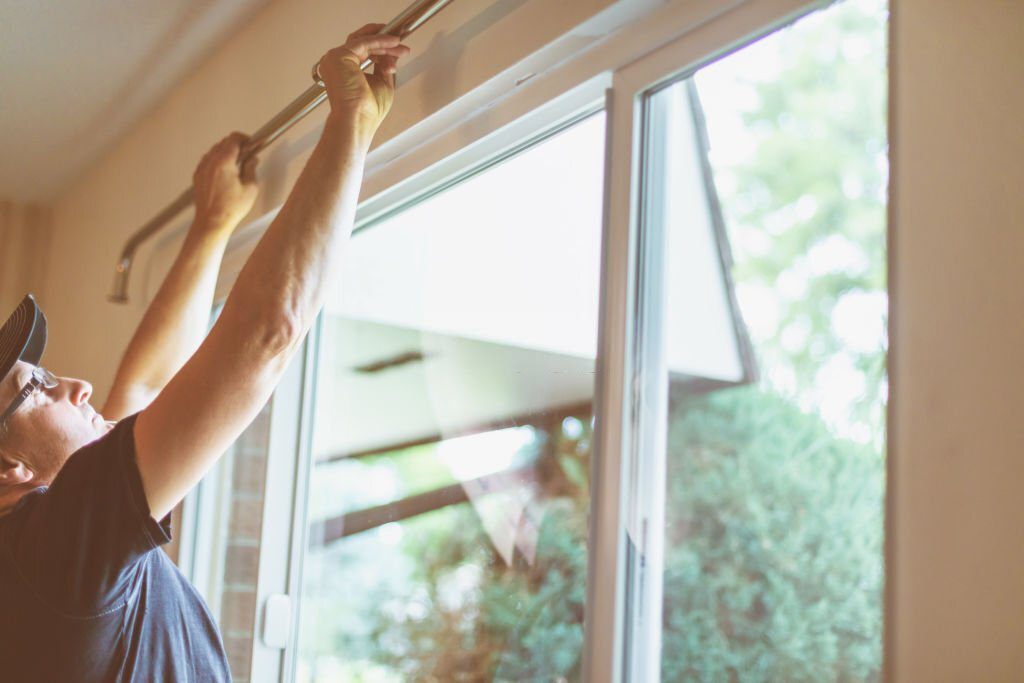
To install the ceiling clips, drill holes in the ceiling at the markings you made in Step 3. Insert wall anchors into the holes and then screw in the ceiling clips. Make sure the clips are securely fastened to the ceiling.
Step 5: Install Track
Take your ceiling-mounted curtain track and install it onto the ceiling clips. Gently slide your curtains or drapes onto the track.
Step 6: Finish
Once you have hung your curtains, make any necessary adjustments to the positioning of the track or curtains. To complete the installation, make sure to clean up any debris and store your tools.
Pros
- Provides a clean and sleek look with curtains appearing to float in mid-air.
- Offers flexibility in curtain placement and track configuration.
- Can support heavy curtains and drapes.
- Can be easily installed and adjusted to fit different window sizes.
- Does not require drilling into walls, making it suitable for rented spaces.
Cons
- Requires more effort and time for installation compared to other non-drilling options.
- May require additional hardware and accessories for proper installation.
- Ceiling-mounted tracks can be more expensive than other alternatives.
- Limited aesthetic options, as the track will be visible.
- May not be suitable for ceilings with intricate designs or low ceilings.
Method 7: Using Suction cup curtain rods for hanging curtain without drilling

These innovative rods use suction cups to grip onto the wall, providing a secure and reliable hold without the need for any screws or nails.
Step 1: Measure your window
Measure the width of your window, including the trim. This will help you determine the size of the suction cup rods you’ll need for your curtains.
Step 2: Select your curtain rods
Choose suction cup curtain rods that match the width of your window and the weight of your curtains. Make sure the rods are of sturdy construction and have adequate suction cups to hold the weight of the curtains.
Step 3: Clean the surface
Clean the area where you plan to attach the suction cups. Use warm, soapy water to remove any dirt or debris that might prevent the suction cups from sticking.
Step 4: Wet the suction cups
Wet the suction cups with water before attaching them to the wall. This will help the suction cups to adhere better to the surface.
Step 5: Attach the suction cups
Peel off the protective backing from the suction cups and press them firmly onto the wall. Make sure the suction cups are level and evenly spaced.
Step 6: Install the rods
Insert the curtain rods into the suction cups. Hang your curtains on the rods and adjust the rods as needed to ensure that your curtains hang evenly.
Step 7: Clean the suction cups
If you notice that the suction cups are losing their grip, remove them and clean them with warm, soapy water. This will remove any dust or debris that may be interfering with their ability to stick.
Pros
- Quick and easy installation without the need for drilling or tools.
- The damage-free solution that does not leave holes or marks on walls.
- Portable and versatile, can be used in different locations and easily removed.
- Suitable for temporary or rented spaces.
- Adjustable and can fit various curtain sizes.
Cons
- Limited weight capacity, suitable for lightweight curtains only.
- The reliability of suction cups may vary depending on the surface and humidity.
- Not suitable for long-term use or heavy curtains.
- May not work well on certain types of surfaces or textured walls.
- Limited aesthetic options, as the suction cups will be visible.
Tips and Considerations
- Measure your window frame before you purchase a bracket or curtain rod to ensure a proper fit.
- When using Kwik Hang brackets, use spacers between the wall and bracket so that the curtain doesn’t rub against the wall when closing and opening them.
- For heavier fabrics like drapes, use ceiling-mounted tracks for extra support and stability.
- Make sure that walls are smooth for suction cups to create a strong enough seal on porous surfaces.
- Use anchors when installing curtains with screws or nails to prevent damage to your wall.
- When hanging curtains, use extra caution not to pull them too hard so you don’t damage the fabric.
- Avoiding overloading the curtain rod
Pros and cons of no-drill curtain hanging methods
Pros: No-drill methods are typically faster, easier and safer than drilling into walls. They also offer more flexibility and can be moved or changed quickly and easily. Additionally, they don’t require any permanent changes to the wall or room.
Cons: Depending on the method used, no-drill curtain hanging may not provide as much stability as traditional hardware that is installed using screws or nails. Some no-drill methods may also be more expensive than other options. Additionally, some surfaces such as textured walls may not work with certain no-drill methods.
What are some common mistakes people make when hanging curtains without drilling?
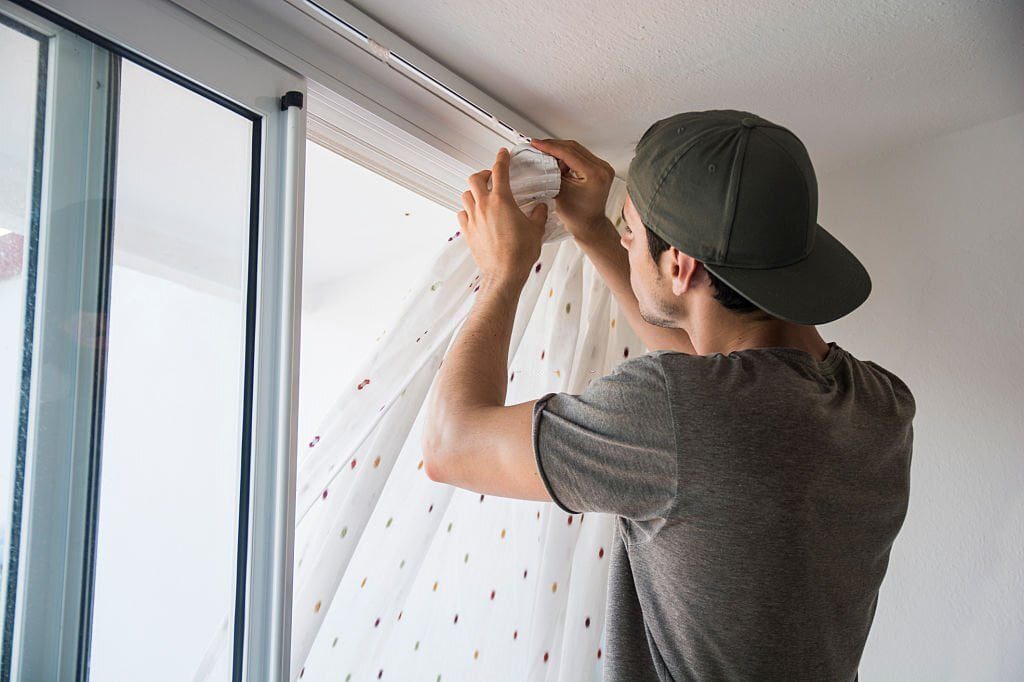
Here are some common mistakes people make when hanging curtains without drilling:
- Not using the right tools. Make sure you have the right tools for the job. If you’re using adhesive hooks, make sure you have a level to ensure the hooks are straight. If you’re using a tension rod, make sure you have a measuring tape to ensure the rod is the right length.
- Not cleaning the surface. Before you hang your curtains, make sure the surface is clean. This will help the hooks or rods adhere properly.
- Not following the instructions. Make sure you follow the instructions that come with your hooks or rods. This will help ensure that you hang your curtains correctly.
- Not being patient. It may take a few tries to get the hang of hanging curtains without drilling. Don’t get discouraged if you don’t get it right away.
FAQ
Which method is best for me?
The best method for hanging curtains without drilling will depend on your specific needs and preferences. If you have a smooth wall, adhesive hooks are a great option. If you have a metal door or window frame, magnetic curtain rods are a good choice. And if you have a window that is not a standard size, a tension rod may be the best option.
Is it really possible to hang curtains without drilling?
Yes, it is possible to hang curtains without drilling. There are a variety of alternative methods you can use to secure your curtains in place without leaving holes in your walls, including tension rods, adhesive hooks, and magnetic rods.
Do I need any special tools to hang curtains without drilling?
In most cases, you do not need any special tools to hang curtains without drilling. Many alternative methods, such as tension rods and adhesive hooks, can be installed using just your hands. However, depending on the specific method you choose, you may need a level to ensure your curtain rod is straight or pliers to adjust the tension of a tension rod. Be sure to read our instructions for your chosen method carefully to determine if any additional tools are needed.
Can I use tension rods for all types of curtains?
Tension rods work best for lightweight curtains made from thin or sheer materials, but may not be strong enough to support heavier curtains made from thicker fabrics like velvet or brocade.
What kind of adhesive hooks should I use for heavy curtains?
Choose adhesive hooks labeled “heavy-duty” or “large” with a weight limit that can support the weight of your heavy curtains, and make sure the surface you stick them to is clean and dry. 3M Command hooks are a popular brand that offers hooks for heavier curtains.
Will adhesive hooks damage my walls over time?
Adhesive hooks can potentially damage your walls over time, but this depends on a variety of factors such as the weight of the curtains and the quality of the adhesive. High-quality adhesive hooks are designed to hold up well over time and minimize the risk of damage to your walls. However, if the weight limit of the hook is exceeded or the adhesive is exposed to extreme temperatures or moisture, it may lose its grip and cause damage when removed. To minimize the risk of damage, be sure to choose high-quality adhesive hooks that are appropriate for the weight of your curtains and follow the manufacturer’s instructions for installation and removal.
How much weight can tension rods hold?
The weight capacity of tension rods can vary depending on their size and quality. Generally, they can hold lightweight to medium-weight curtains. However, it’s important to check the weight specifications provided by the manufacturer to ensure you’re within the rod’s limits.
Conclusion
Hanging curtains without drilling is not only easy and practical, but it also allows you to achieve the look and feel you want in your living space without damaging your walls. Whether you choose to use tension rods, adhesive hooks, or magnetic curtain rods, each method provides a variety of benefits such as convenience, versatility, and cost-efficiency. So the next time you’re looking to spruce up your home decor, consider trying out these techniques and see how much of an impact they can have on your living space. Say goodbye to drilling holes in your walls and hello to beautiful, stylish, and practical curtains!

I am Stacy Roberts, an experienced curtains expert. I spend most of my time writing about curtain design for various magazines and websites, including writing many blog posts on the topic for Homepicks24.com. I love helping people find the perfect curtains for their homes and take great pride in my work. When I'm not writing or helping people choose curtains, I enjoy spending time with my wife and two young children. I also love playing tennis and going to the beach. I believe that having a beautiful home with well-chosen curtains is essential to creating a special atmosphere of comfort and serenity, and thus I strive to help people find the right window treatment for their homes.

